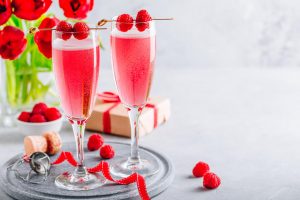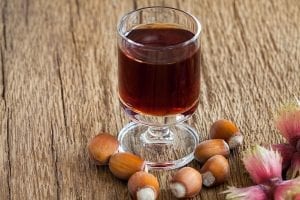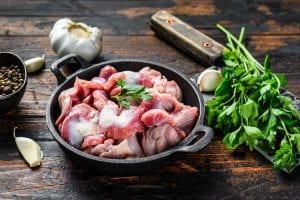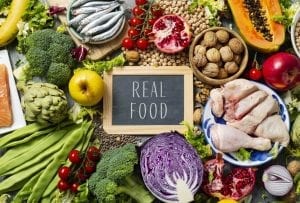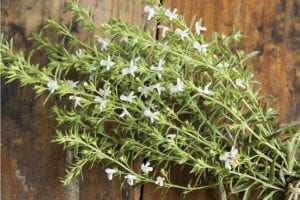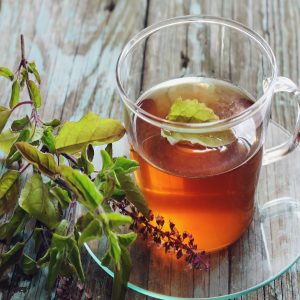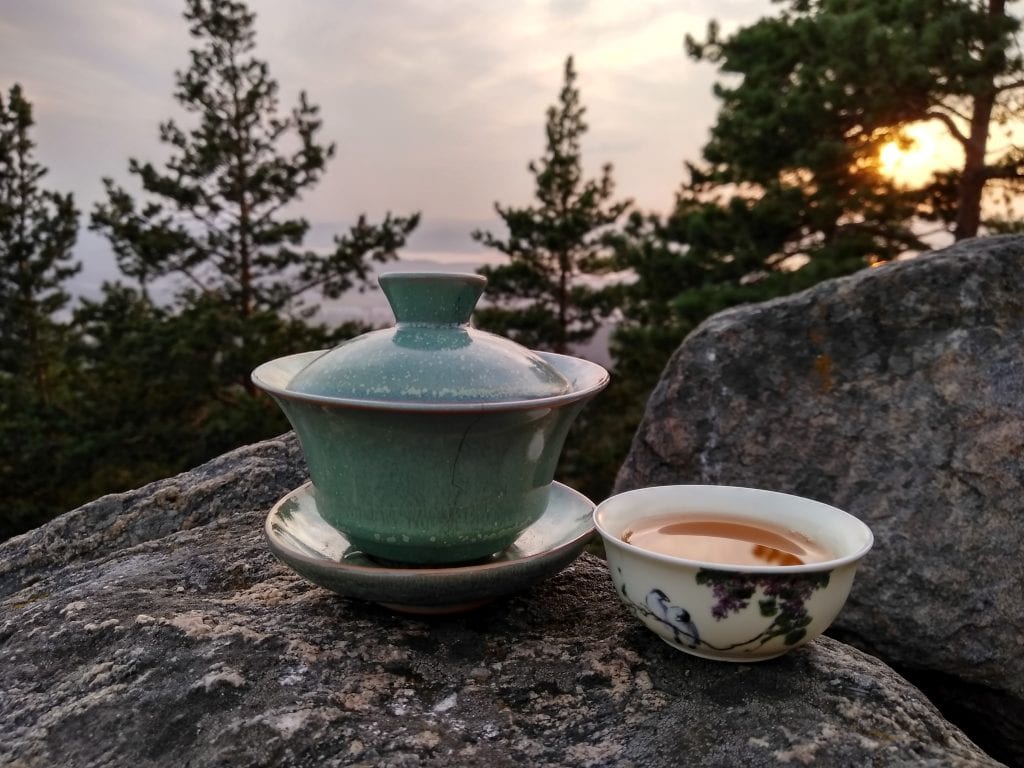
For centuries, tea has had a deep-rooted relationship with Chinese culture. Old civilizations began embracing Chinese tea for the physical and spiritual health benefits it offers. Up until now, this culture still thrives, and even casual drinkers enjoy a cup or two of this warm leafy beverage.
In this article, we’ll be exploring the wonders of Chinese tea – both its many types and numerous herbal tea health benefits.
Types of Chinese Tea
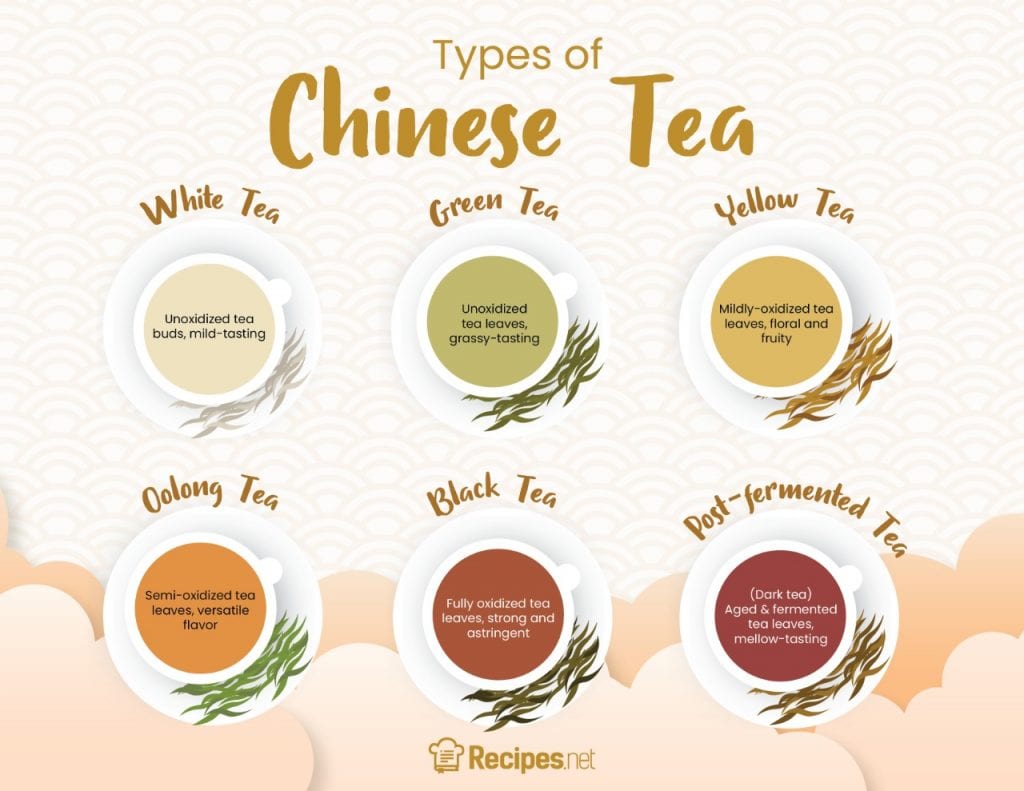
All Chinese tea leaves come from a plant called Camellia sinensis. If this is the case, then how come we have different types of Chinese tea? The short answer is in the process. These tea leaves are processed differently to produce various tea types. Take a look at the list below to find out how your favorite brew is made:
White Tea
Steeping time: 1 to 5 minutes
Ideal water temperature: 172 to 185 degrees F
This type is made of the first buds of the tea plant that have been harvested and immediately steamed or pan-fired to prevent oxidation. The leaves are then dried either naturally, in a controlled environment, or in a drying chamber. Of all the other Chinese tea variants, white tea requires the least processing.
Silver Needle Tea (白毫银针)
Natives refer to this tea as Baihao Yinzhen. This is a premium-grade type of white tea that is produced in the province of Fujian in China. The individual silver needle tea buds are long and “needle-like.” Steeped, these delicate tea buds exude a mild, sweet, and fresh flavor with notes of brightness.
Yellow Tea
Steeping time: 2 minutes
Ideal water temperature: 167 to 176 degrees F
This specialty tea was once only produced for the emperors and rulers of ancient China thanks to its liquor-like color. Increasingly rare and highly sought after, yellow tea has a distinct mellow-sweet taste and fragrance.
It’s made of young tea leaves that have been slowly cooked at a low temperature to stop further oxidation. It then undergoes a slight fermentation process called “sweltering” or “yellowing” where the buds are lightly heated while covered in cloth for a short period of time. The process is repeated two to three times, and then the leaves are dried at slowly increasing temperatures. This is what gives yellow tea its distinct color. As a result, it’s much more mellow and less grassy-tasting than green tea, with bright, floral flavors and a fruity aftertaste.
Jun Shan Silver Needle Tea (君山银针)
Not to be mistaken with the silver needle white tea, jun shan silver needle tea is one of three remaining yellow Chinese teas in the world. Made only on Jun Shan Island in Hunan, it is also the most famous type of yellow tea since it was declared by the historical Chinese figure, Mao Ze Dong, to be his favorite tea.
Jun shan silver needle tea is favored for its rich aroma and the crisp sweetness that lingers in your mouth with every sip.
Green Chinese Tea
Steeping time: 1 to 3 minutes
Ideal water temperature: 172 to 185 degrees F
Unlike white and yellow tea, this variant is generally produced using more mature tea leaves. They are also pan-fired to prevent them from oxidizing, dried at a lower temperature, and then rolled. This makes for a tea that’s lighter in color compared to oxidized ones. It also retains a grassy and vegetal taste from the leaves.
Longjing Tea (龙井茶)
The English translation of the name is “Dragon Well tea.” We recognize Longjing as one of the most popular green teas available in the market. It is produced in the Longjing village in the Hangzhou province of China, hence its name. This place has an optimal climate that is best suited for growing high-quality green tea.
The individual tea leaves of premium-grade Longjing tea are smooth, flat, and retain a bright or yellow-green color due to the lack of oxidation. It has all the makings of the best green tea as it retains the vegetal and grassy flavor without being overly aggressive.
Oolong tea
Steeping time: 1 to 5 minutes
Ideal water temperature: 185 to 212 degrees F
To make this kind of tea, the leaves are left to wither and partially oxidize for a short period of time. Then, they are treated with heat to stop further oxidation. As a result, oolong is darker than green tea but lighter than black and post-fermented tea.
Tie Guan Yin (铁观音)
The name of this tea translates to “Iron Goddess of Mercy.” Tie guan yin is a premium kind of oolong tea. Hence, it is semi-oxidized with a flavor profile that’s in between green tea and black tea. Tie guan yin is also incredibly aromatic with an unmistakable floral musk.
Tea makers have different ways of processing tie guan yin, so there are also lots of varieties within this particular type. Those which are lightly cooked are greener, more floral, and vegetal-tasting with notes of creaminess. Meanwhile, the more baked and fully-roasted ones tend to be deeper and bodied with complex fruity notes.
The wide flavor range of tie guan yin gives it more leeway in terms of food pairing. Generally, oolong is strong enough to pair with seafood and grilled meat. A plate of seasoned and crispy baked scallops should go well with a warm cup of this brew.
Da Hong Pao Tea (大红袍)
Translated as a “big red robe,” this luxurious tea is among the most expensive leaf brews in the world. It’s also one of the most celebrated by Chinese people. Da Hong Pao is a type of dark oolong tea. Tea makers harvest the leaves from original tea trees in the Wuyishan town located in the province of Fujian.
It may look normal with its green and brown color and twisted leaves, but genuine and aged Da Hong Pao tea can cost more than gold by weight because of its rarity. As an oolong tea, it boasts a combination of toasted earthy flavors with notes of sweetness and fruitiness. Da Hong Pao exudes a woody and floral scent.
Red Chinese Tea (Black tea)
Steeping time: 5 minutes
Ideal water temperature: 210 degrees F
The West calls it black tea, but in China, it’s known as red tea due to the reddish color of its infusion. For this type, the leaves are bruised and oxidized for a longer period of time. The more tea leaves are exposed to air or “oxidized”, the darker they become. As a result, it is the strongest and most-astringent among the other types of tea.
Keemun Black Tea (祁门红茶)
Keemun black tea is known to promote youthfulness, vitality, and good heart health. The dried leaves are tight and thin and are also covered with fine hairs. It is widely praised for its smoothness when brewed, and its sweet and floral aroma like that of orchids.
Post-fermented Chinese Tea (Dark Tea)
Steeping time: 3 minutes
Ideal water temperature: 212 degrees F
To make this variety of tea, the leaves are fully-aged to carefully undergo oxidation and fermentation from a few months to several years. This process reduces the astringent quality of tea, making it more mellow.
Pu Erh Tea (普洱茶)
This tea is named after the town from which it hails in Yunnan, China. Pu Erh tea or Pu’erh is a popular type of fermented tea. It undergoes a full fermentation process that removes the sharp bitter flavor from the leaves. Hence, it tastes more mellow despite being darker than black tea.
Pu Erh tea and other dark teas are known for their ability to reduce the greasy mouthfeel from food. This fermented tea is great to have with large meals and strong-flavored fatty food.
Chinese Flower Tea
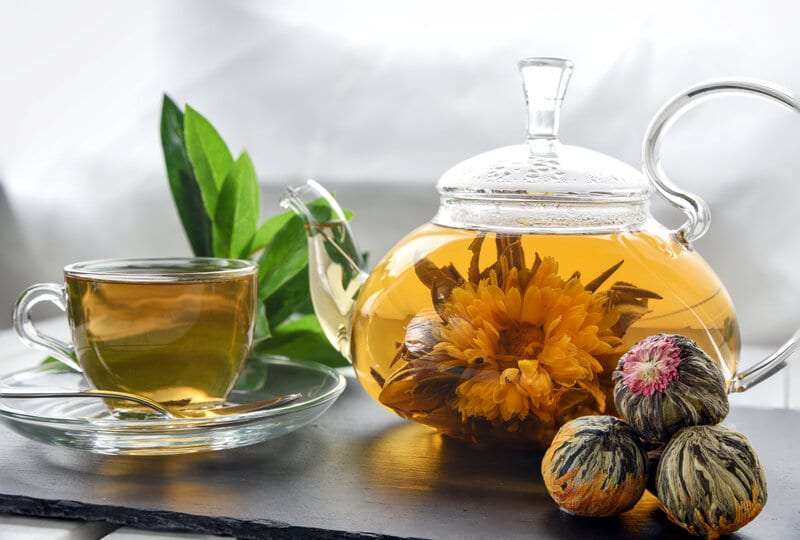
Chinese flower teas are additions of dried buds or petals of the flower to the various types of teas mentioned, or simply steeped in hot water. Although not considered a Chinese tea group on its own, flower teas are greatly loved for their health benefits, fragrance, added natural taste, and pleasing appearances. There truly are many types of Chinese floral teas but the two below are highly celebrated by the Chinese.
Jasmine Tea (茉莉花茶)
Steeping time: 2 to 3 minutes
Ideal water temperature: 160 to 180 degrees F
This may be one of the most quintessential scented teas in existence. Jasmine tea is typically made of green tea that has been infused with jasmine flowers. However, you’re also free to use black, oolong, or white tea as the base. Generally, a fine cup of jasmine tea should be delicate, soothing, and highly-fragrant.
Flowering Tea (香片)
Steeping time: 2 to 3 minutes
Ideal water temperature: 197 to 212 degrees F
Also known as “blooming tea,” we’ve long celebrated this type of tea for its alluring appearance. This tea blooms to reveal its beautiful flowers when submerged in hot water. Serve a visual feast for your guests by steeping a pod of blooming tea in a transparent pot.
To achieve this blooming effect, tea makers flatten and sew tea leaves into different shapes with flowers at the core. This process decreases the flavor of the tea leaves.
As a result, flowering tea is not as flavorful compared to the other popular Chinese tea types. It tastes more neutral with mild floral and grassy notes from the leaves.
Benefits of Chinese Tea
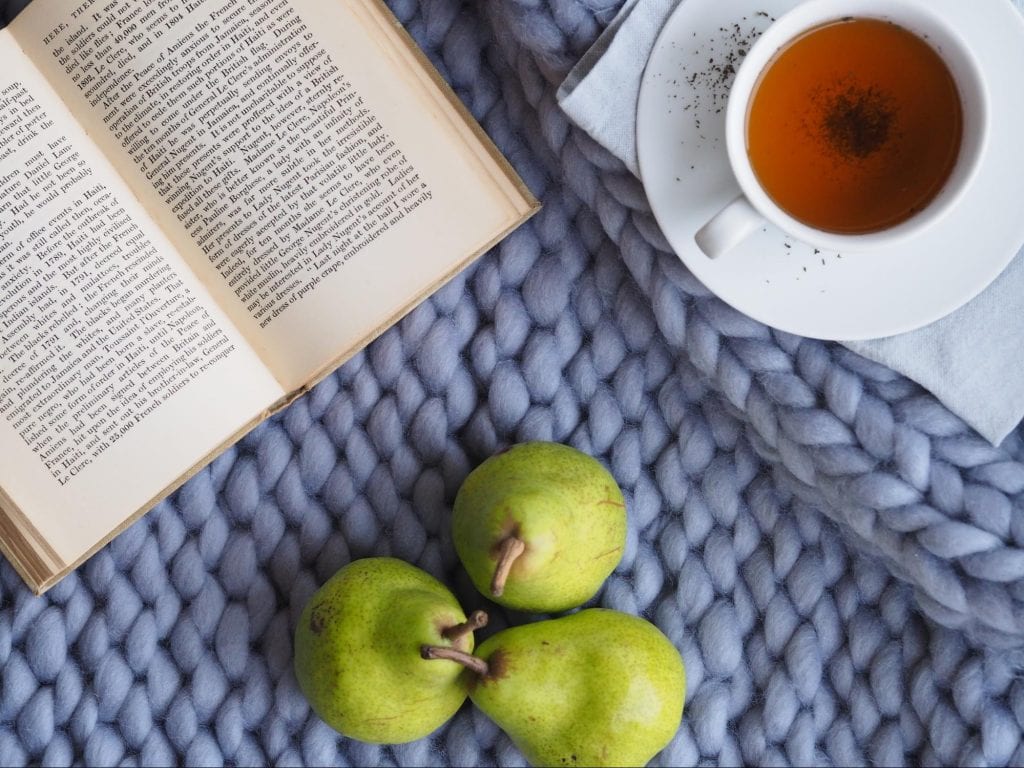
Aside from the relaxing and aromatic tea-drinking experience, we embrace Chinese herbal tea and “true” teas because of the healthy substances they contain. However, not all teas are created equal. We process teas differently to achieve their distinct flavors, and that results in varying compound compositions overall.
Anti-inflammatory
One of the best-known qualities of Chinese tea is its ability to reduce inflammation. Researchers have observed this in several tea types, most significantly in green and black tea. The plant compounds called flavonoids are responsible for this. As a result, tea is great for lowering the risk of stroke and heart problems. It’s great for skin care, too!
Fights Cancer
These flavonoids also have cancer-fighting abilities! Hence, they may reduce the risk, as well as stop the growth of certain cancers. Among all variants of tea, studies have shown that white tea is the most potent. It also contains the least amount of caffeine, so t’s a great alternative to green tea if you’re looking to cut your caffeine intake.
Promotes Weight Loss
A type of flavonoid present in tea also makes this beverage ideal for weight loss as it can help increase metabolism. This lets your body break fat down a lot faster!
Healthy for the Brain
More than that, tea has also been studied in relation to brain health. Oolong, green, and black tea specifically have shown potential in decreasing the risk of cognitive-related problems because of a certain amino acid in this tea.
That being said, there is much more to be studied regarding Chinese tea and its benefits to human health. This is especially true for types like yellow tea which hasn’t been studied as much because of its rarity. It’s also important to note that despite these scientific claims, it’s always best to consult a health professional regarding treatments for certain diseases.
Side Effects: Who Shouldn’t Be Drinking (Too Much) Tea?
As with most things in life, Chinese tea is best taken in moderate amounts. Drinking too much can pose risks and side effects for certain types of people.
For example, a plant molecule called tannin binds with iron which could reduce the body’s absorption of the said mineral. This is bad news for those who are in most need of iron. Aside from that, tannins could also irritate the stomach linings of those prone to digestive issues.
To add, since Chinese tea contains caffeine, too much of it can cause or increase anxiety and restlessness, especially for those who are experiencing mental health problems. If caffeine is not for you, you can try making herbal teas instead. A soothing lemongrass tea or relaxing valerian root tea are just some of the herbal beverages with calming effects that you can try. We also advise pregnant women to limit their caffeine and herbal tea intake to avoid possible complications.
Bear these in mind to avoid any unwanted side effects. Feel free to contact your healthcare provider if you have any concerns. But as long as you’re not sensitive to any of its contents and you don’t consume too much tea, then you should be fine.
How to Store Chinese Tea
Aside from its flavor, a Chinese tea also has an aromatic quality. To keep your tea fresh, you should protect these two qualities from being degraded.
Light and heat can lower the quality of your tea. We recommend storing your tea in an opaque container, preferably a ceramic jar. If you only have a transparent container, you can also use it but always remember to store it in a dry, dark place away from direct sunlight.
You should also keep teas separate from one another. This is to prevent your milder smelling teas from absorbing the aroma of the stronger smelling ones. Also, remember to keep your Chinese tea away from other odorous food or substances as their smell can penetrate and ruin the quality of your tea.
In Conclusion
If made and consumed the right way, Chinese tea has a lot to offer. This is not only in terms of flavor but also in terms of health benefits.
Whether you’re looking for a drink to accompany your meal or a way to incorporate the Chinese tea culture into your lifestyle, you’ll have a wide range of options to choose from. Feel free to experiment and see which type piques your interest the best.

